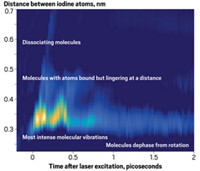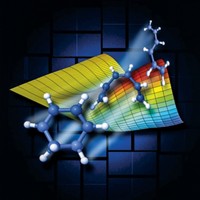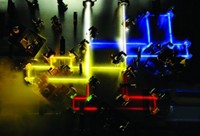Advertisement
Grab your lab coat. Let's get started
Welcome!
Welcome!
Create an account below to get 6 C&EN articles per month, receive newsletters and more - all free.
It seems this is your first time logging in online. Please enter the following information to continue.
As an ACS member you automatically get access to this site. All we need is few more details to create your reading experience.
Not you? Sign in with a different account.
Not you? Sign in with a different account.
ERROR 1
ERROR 1
ERROR 2
ERROR 2
ERROR 2
ERROR 2
ERROR 2
Password and Confirm password must match.
If you have an ACS member number, please enter it here so we can link this account to your membership. (optional)
ERROR 2
ACS values your privacy. By submitting your information, you are gaining access to C&EN and subscribing to our weekly newsletter. We use the information you provide to make your reading experience better, and we will never sell your data to third party members.
Analytical Chemistry
Electron Dynamics
by Mitch Jacoby
March 8, 2010
| A version of this story appeared in
Volume 88, Issue 10

Electrons, the stuff of chemical bonds, zip around at an unimaginably fast time-scale—on the order of attoseconds (10–18 seconds). The ability to generate and control attosecond pulses of laser light is less than a decade old. Yet in the past few years, chemists have begun to learn how to use these new laser methods to create three-dimensional electron-orbital images and hope to soon make movies that capture the orbitals undergoing change in the course of chemical reactions.
To access such short timescales, scientists train intense femtosecond pulses of visible laser light on a sample. The interaction of the radiation with an atom, molecule, or solid strips away an electron from the sample and then drives it right back again in an energetic collision that generates a burst of attosecond light in the extreme ultraviolet region, according to Paul B. Corkum, one of the field's pioneers.
Nearly 10 years ago, Corkum, a research group leader at Canada's National Research Council, in Ottawa, together with an international team led by Ferenc Krausz, now director of the Max Planck Institute for Quantum Optics, in Garching, Germany, reported the first attosecond measurements. The group generated the attosecond pulses in neon and measured them by combining the pulses with visible pulses and then analyzing the photoelectrons that the beams jointly ejected from krypton (Nature 2001, 414, 509).
Since that time, scientists have exploited laser control over electrons in various ways to image the molecule or orbital from which the electrons came. In one method, laser pulses simultaneously fix the molecule's orientation and measure the intensity of electron extraction (or tunneling) over a series of orientations, thereby tracing the outline of the orbital. Another method reconstructs an orbital's shape tomographically by analyzing interference data that's encoded in the attosecond spectrum. Those data arise from the process of extracting and quickly returning an electron to an orbital. Driving the electron back into the molecule sometimes leads to electron scattering. That process forms the basis of a new type of electron diffraction technique for accurately measuring the positions of the molecule's nuclei.
The methodology of attosecond science is just being developed now, but it holds the promise of providing an exceptionally close-up view of atomic and molecular processes. "To observe electron orbitals change as bonds are formed and broken is to observe the essence of chemistry," Corkum says.





Join the conversation
Contact the reporter
Submit a Letter to the Editor for publication
Engage with us on Twitter